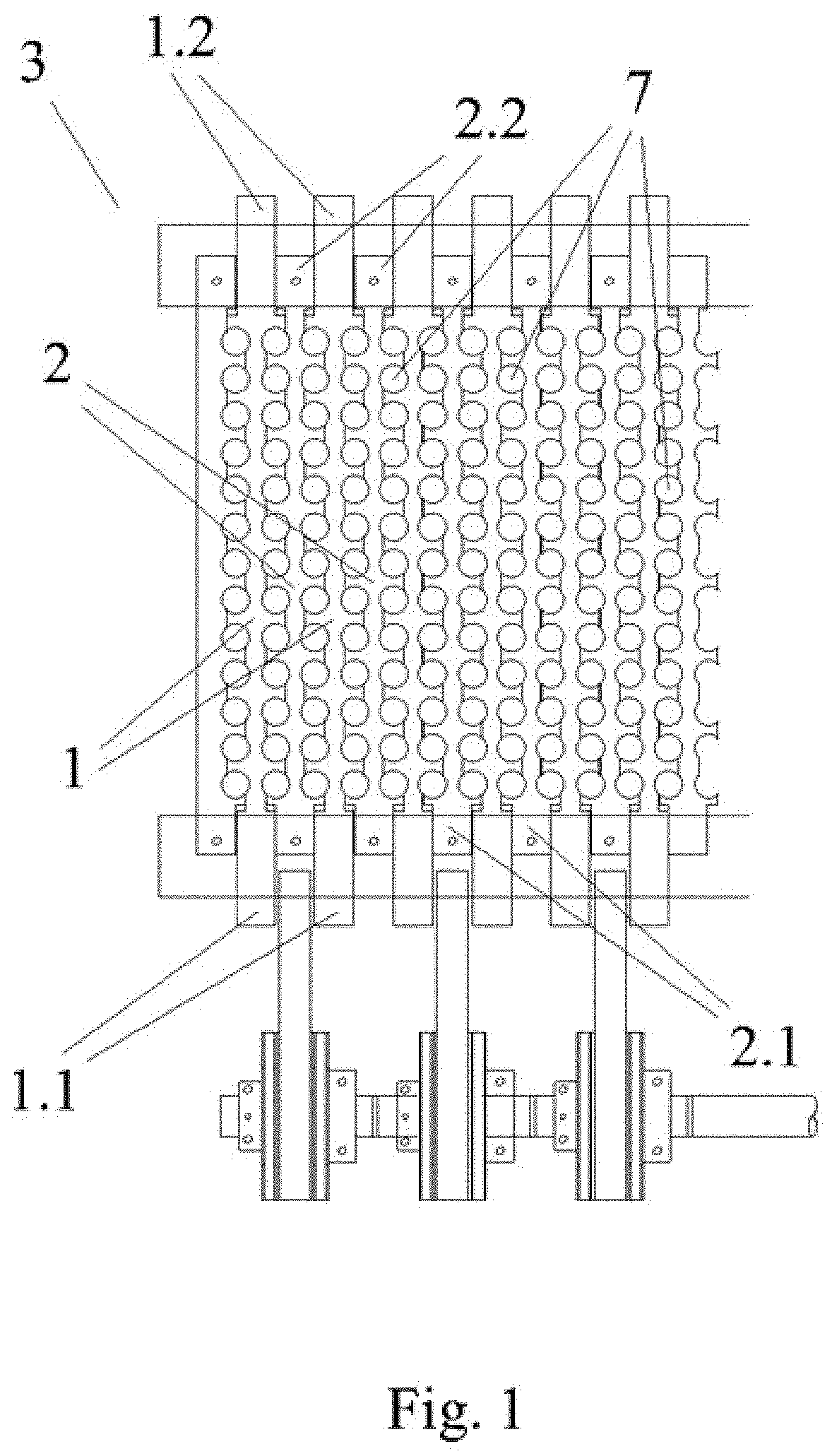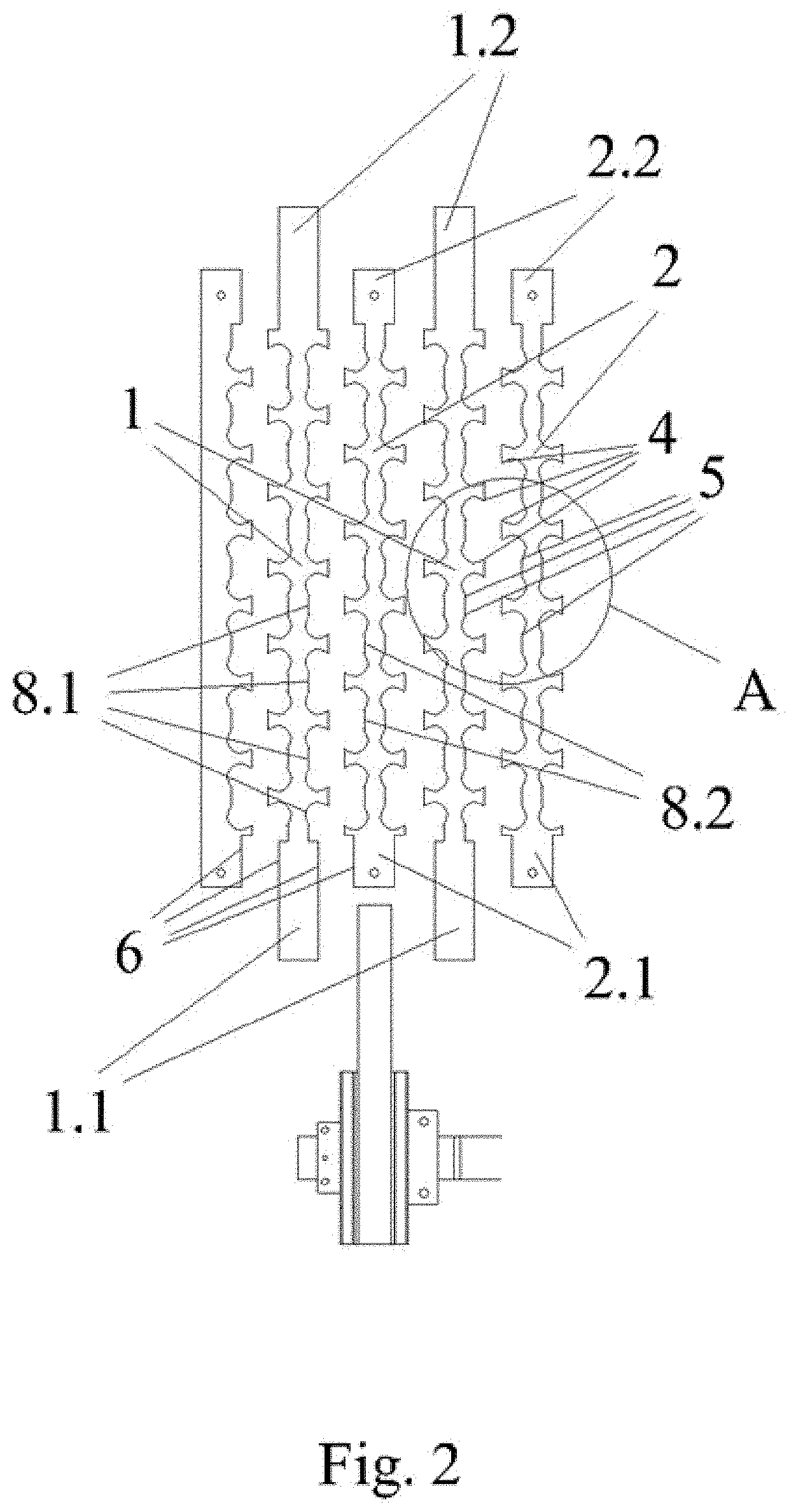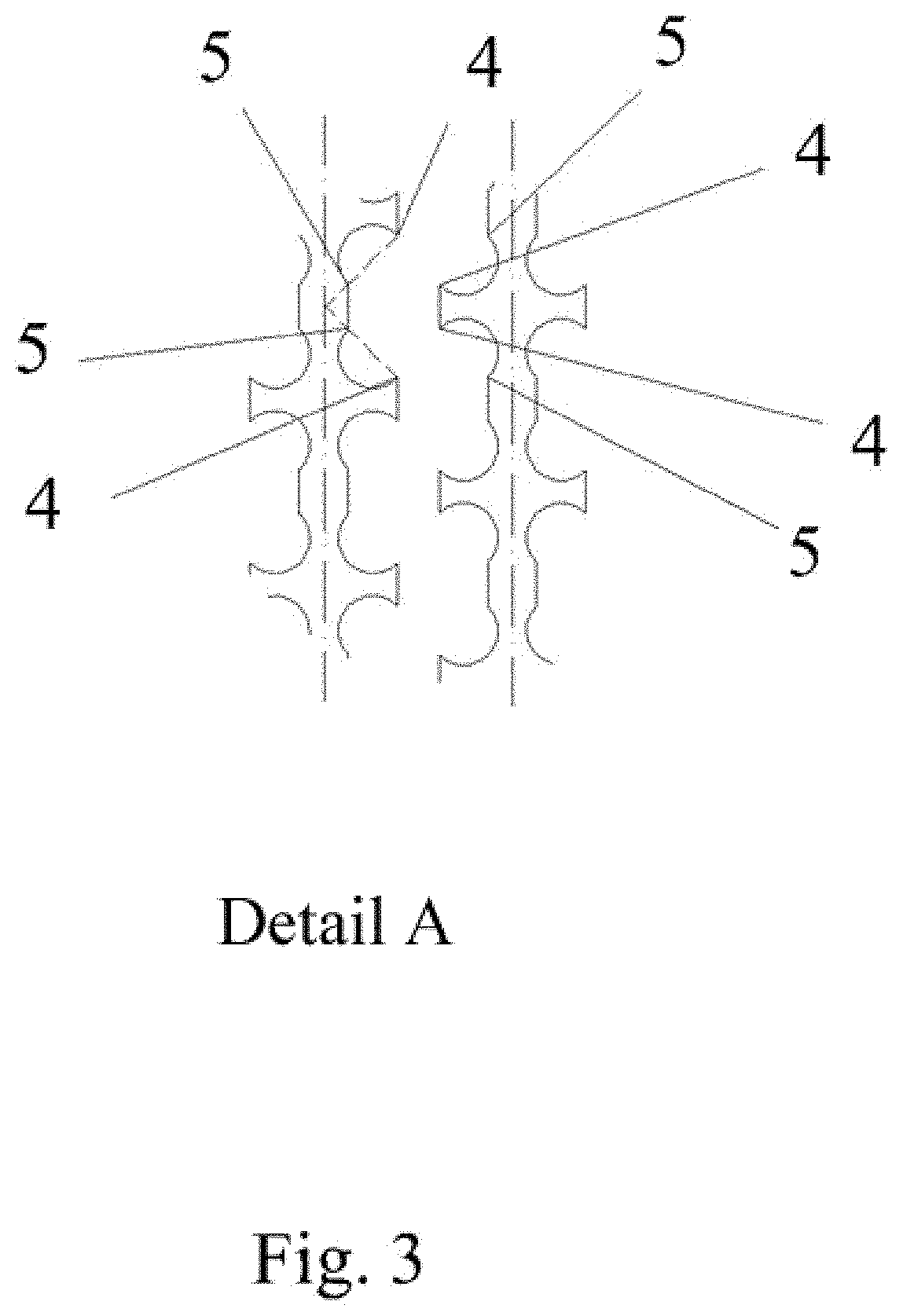Cracking-Shelling Mechanism For Nuts With A Hard Or Soft Shell
- Summary
- Abstract
- Description
- Claims
- Application Information
AI Technical Summary
Benefits of technology
Problems solved by technology
Method used
Image
Examples
Embodiment Construction
[0040]In view of the figures that have been provided, it can be observed how, in a preferred embodiment of the invention, the cracking-shelling mechanism (3) for nuts with a hard or soft shell proposed herein for nut shelling machines comprises a plurality of first longitudinal blocks (1) parallel to one another, with a first end (1.1) secured to means for reciprocating movement in both directions according to the longitudinal axis thereof, and a plurality of second longitudinal blocks (2) parallel to the first longitudinal blocks and arranged in an alternating and adjacent manner with respect to same.
[0041]All the blocks (1, 2) have first and second ends (1.1, 1.2, 2.1, 2.2), respective lower and upper bases, and two sides (6). Likewise, between the sides (6) of each first and second block (1, 2) there is formed a plurality of tapered vertical through holes (7) between the upper and lower bases of the blocks.
[0042]In this mechanism (3) the facing sides (6) between each first and se...
PUM
 Login to View More
Login to View More Abstract
Description
Claims
Application Information
 Login to View More
Login to View More - R&D
- Intellectual Property
- Life Sciences
- Materials
- Tech Scout
- Unparalleled Data Quality
- Higher Quality Content
- 60% Fewer Hallucinations
Browse by: Latest US Patents, China's latest patents, Technical Efficacy Thesaurus, Application Domain, Technology Topic, Popular Technical Reports.
© 2025 PatSnap. All rights reserved.Legal|Privacy policy|Modern Slavery Act Transparency Statement|Sitemap|About US| Contact US: help@patsnap.com



